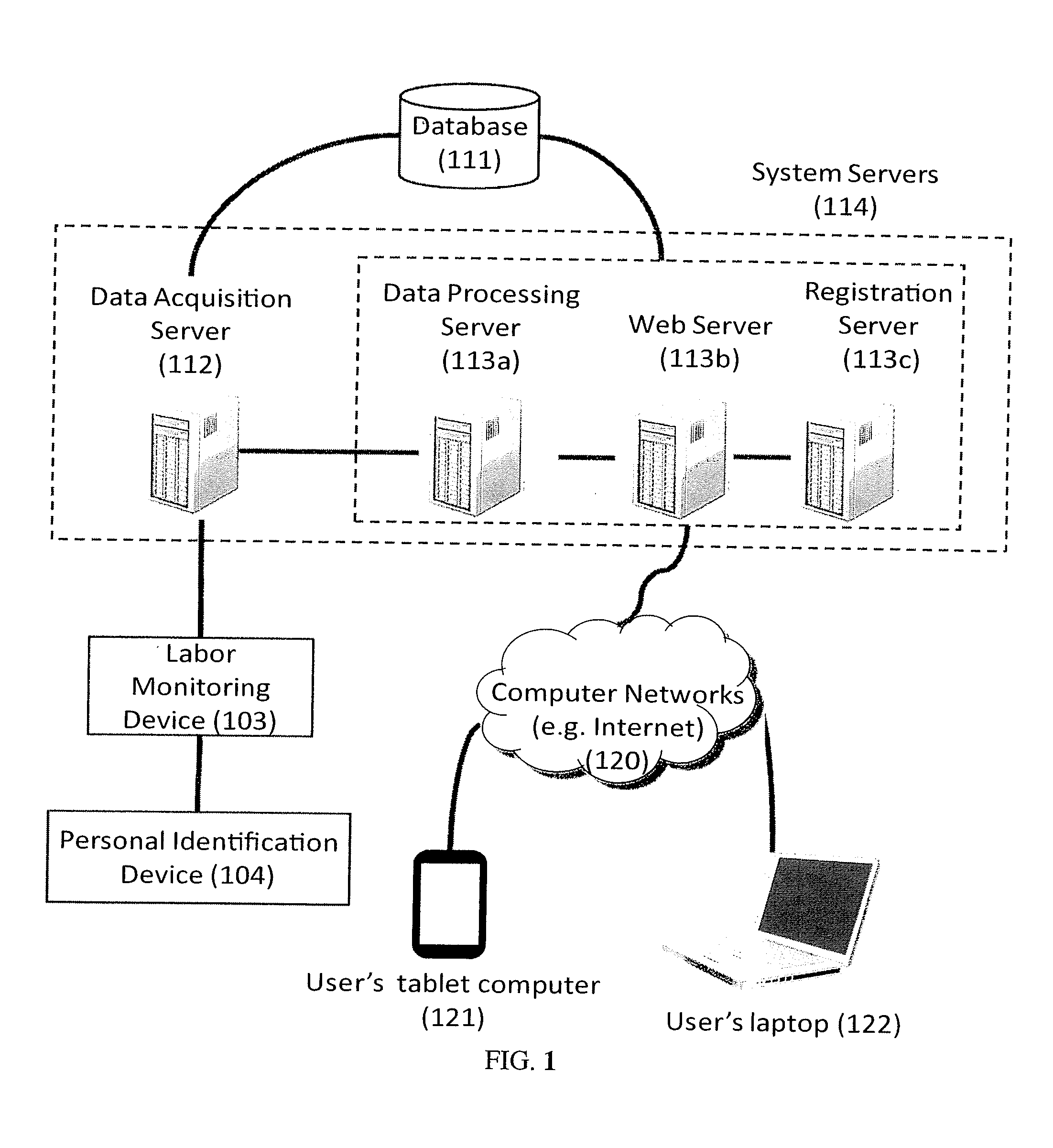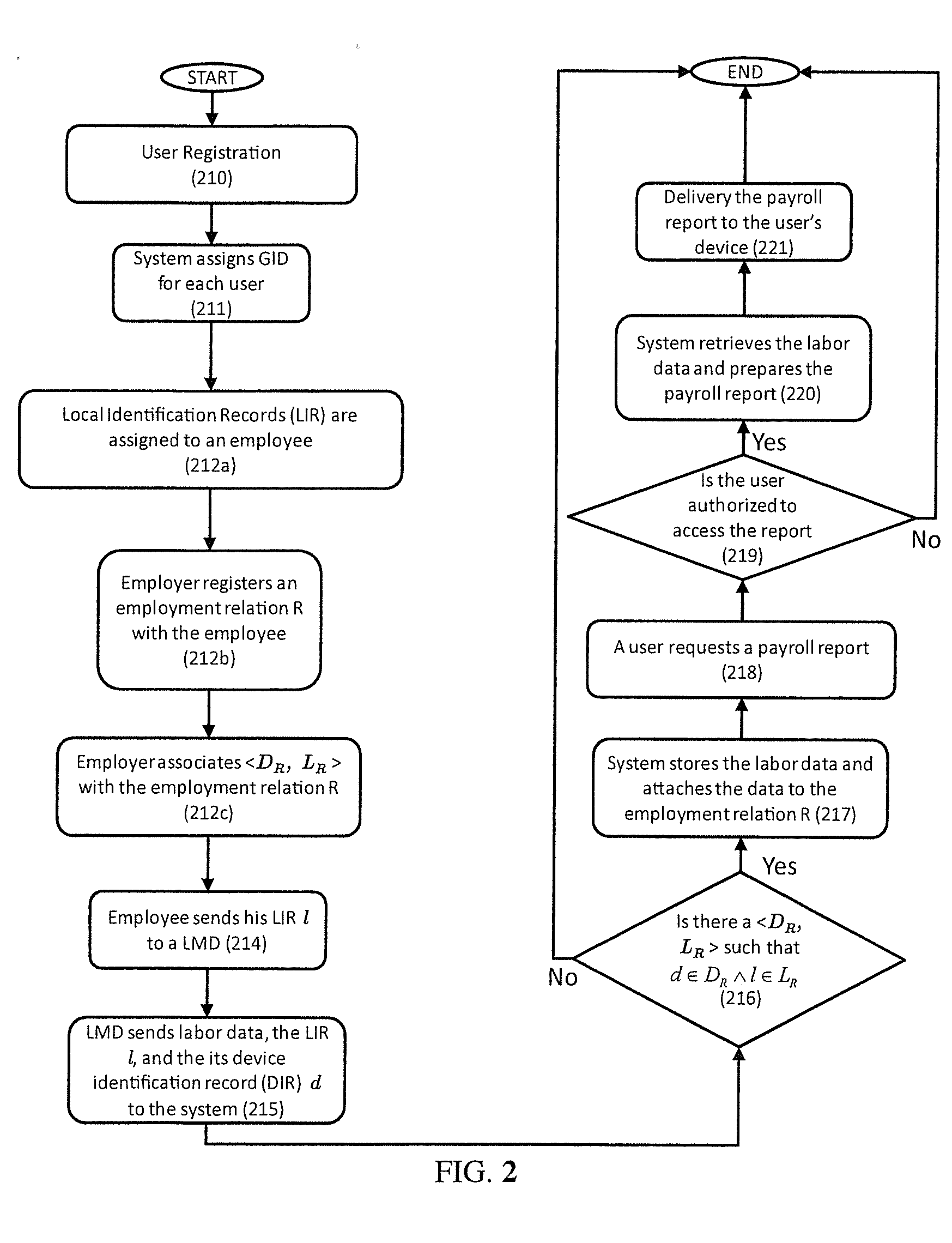Systems and Methods for Collecting and Accruing Labor Activity Data Under Many-to-Many Employment Relation and with Distributed Access
a labor activity and data collection technology, applied in the field of labor monitoring and payroll accounting, can solve the problems that the actual employment which incurs a labor activity may not be easily decided, and achieve the effect of efficient and effective identification of employment relationships and efficient and effective identification
- Summary
- Abstract
- Description
- Claims
- Application Information
AI Technical Summary
Benefits of technology
Problems solved by technology
Method used
Image
Examples
case 1
[0062]Migrant worker José works for Fred's apple Orchard on two positions. Jose may work as an office assistant for Fred, or as a fruit picker. Before José starts with Fred's Orchard, Fred assigns a Personal Identification Device (PID) (104, FIG. 4). The PID is an RFID-embedded wristband. Fred then registers two employment relations for José (312b, FIG. 4). The RFID of the wristband is José's Local Identification Record.
[0063]In the employment relation for José's office assistant position, Fred associates with this relation a pair of doffice,RFID), where doffice is the device identification record (DIR) of the Labor Monitoring Device 103 located in Fred's office. The LMD at office consists of the following components: a RFID reader; a clock; and a DIR doffice. The DIR doffice is a digital sequence uniquely identifying the LMD in the system. When José works as an office assistant, he simply waves his RFID-embedded wristband before the LMD at the office. The LMD measures José's activi...
case 2
[0065]John is an assembly line worker. His assignment is to assemble a component C. Once a component C is assembled, John put it in a RAID-tagged container. The container then passes through a labor monitoring device (LMD) to the next stage of assembly. Before John starts, he is assigned with a dozen RAID-tagged containers. A trusted agent of his employer has registered DR,RFIDR with John's employment relation. RFIDR is the set of RFID tags on the containers assigned to John, and DR is the set of all the device identification numbers of all the LMDs being deployed on the assembly line. A labor monitoring device comprises the following components: a RAID reader, a clock, and a DIR id. Every time when a container passes a LMD (415a, b, FIG. 5), the LMD sends the labor data (i.e. the current time), the RAID id of the container, and d to a data acquisition server (315, FIG. 5). Once the system receives the data, it finds the pair DR,RFIDR such that d ∈ DR and id ∈ RFIDR (316, FIG. 5). T...
PUM
 Login to View More
Login to View More Abstract
Description
Claims
Application Information
 Login to View More
Login to View More - R&D
- Intellectual Property
- Life Sciences
- Materials
- Tech Scout
- Unparalleled Data Quality
- Higher Quality Content
- 60% Fewer Hallucinations
Browse by: Latest US Patents, China's latest patents, Technical Efficacy Thesaurus, Application Domain, Technology Topic, Popular Technical Reports.
© 2025 PatSnap. All rights reserved.Legal|Privacy policy|Modern Slavery Act Transparency Statement|Sitemap|About US| Contact US: help@patsnap.com



